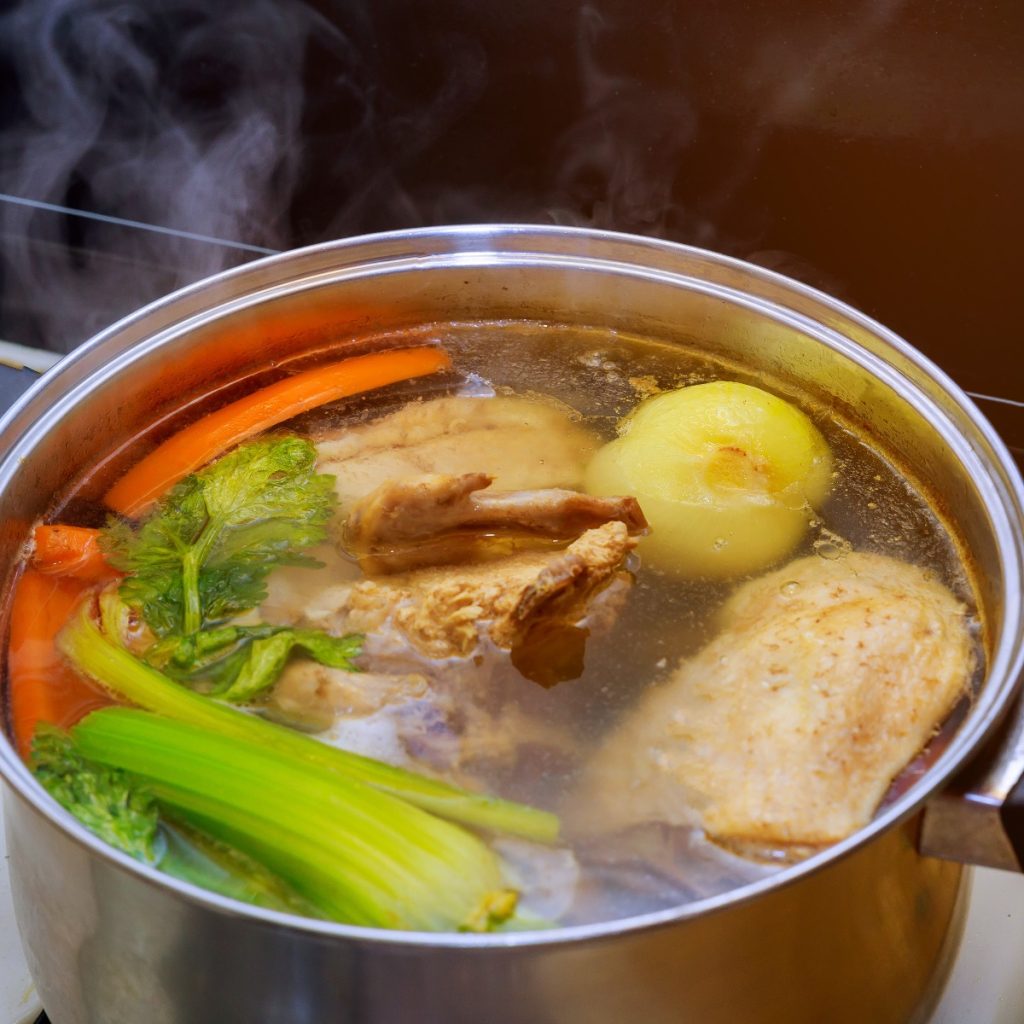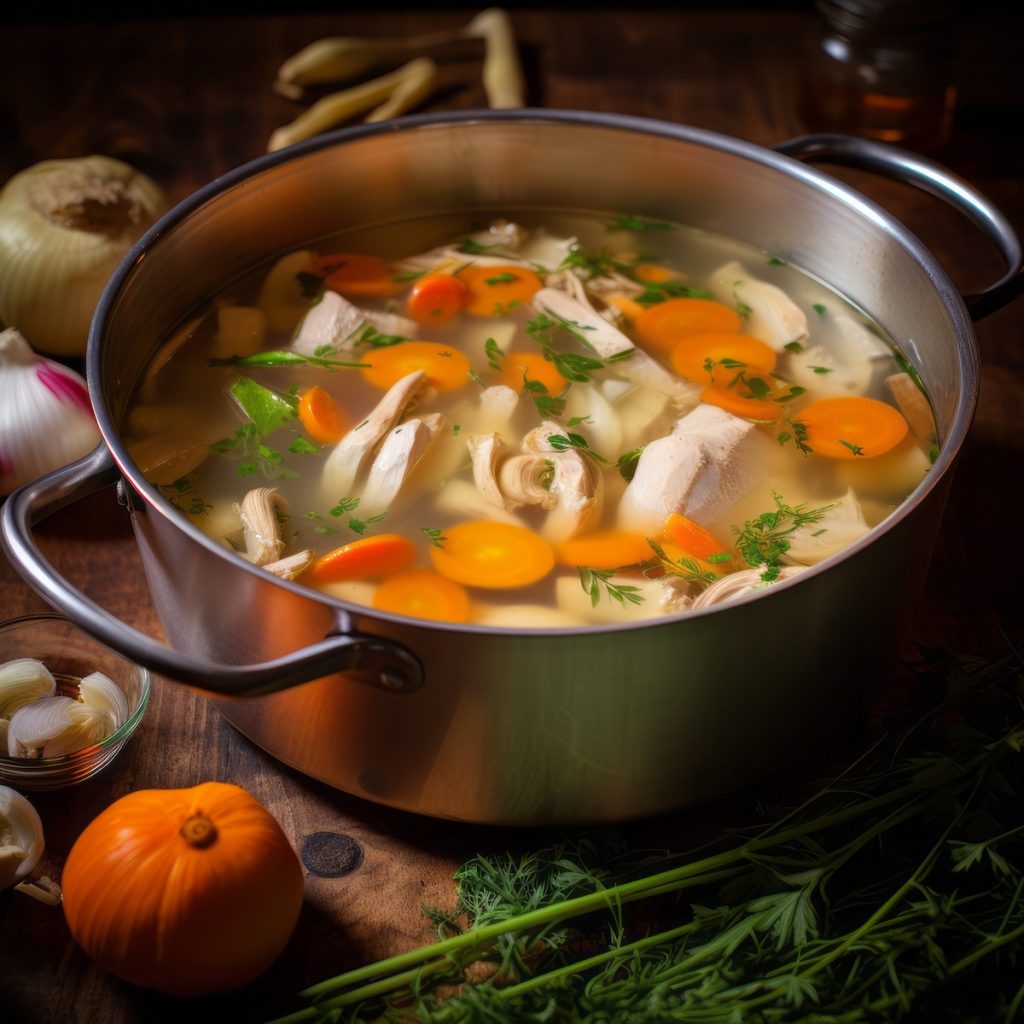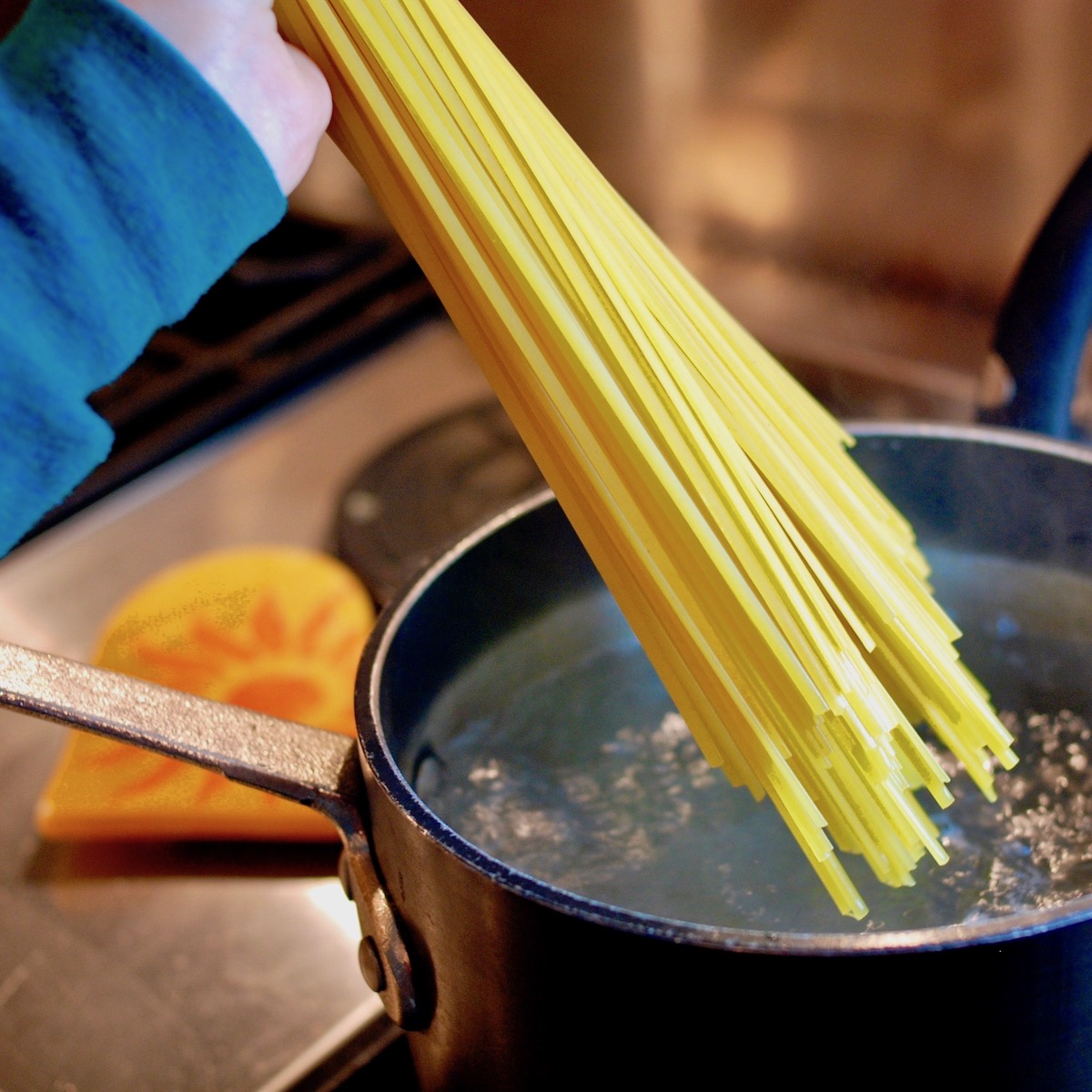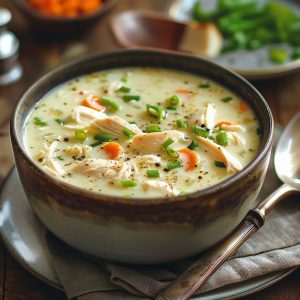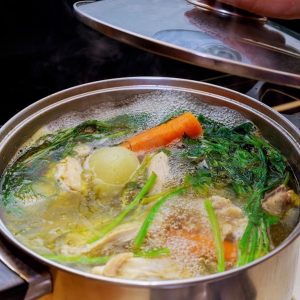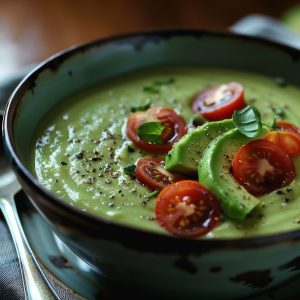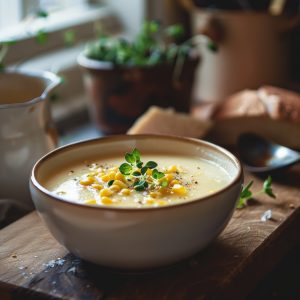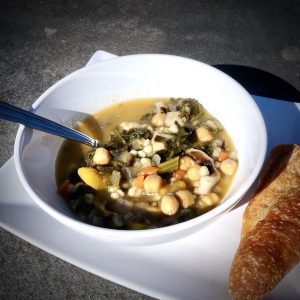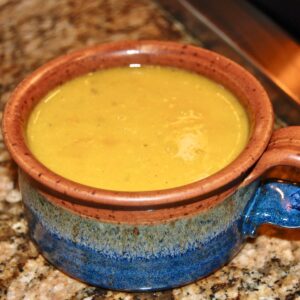Two Types of Chicken Stock
Chicken stock is a fundamental building block of countless dishes, from soups and stews to sauces and gravies. Making your own chicken stock at home enhances the flavor of your cooking and allows you to control the ingredients, ensuring a healthier and more personalized result.
Whether using leftover chicken bones or roasting fresh chicken parts, homemade stock infuses your recipes with a deep, savory richness that store-bought alternatives can’t match. Additionally, it’s an easy and cost-effective way to utilize kitchen scraps, making it an environmentally friendly option as well.
In this post, I’ll explore how to create a flavorful, aromatic chicken stock from scratch and share a versatile recipe that will elevate your next meal. Let’s get started!
“If you want to prepare delicious, “incredible” food, you must start with the right ingredients. And, without a doubt, that includes homemade stock. ” – Chef Jean-Pierre Brehier
White Chicken Stock Recipe
Ingredients
- 5 pounds chicken pieces wings, backs and necks. (If you purchase whole chickens to cut up for a recipe, you can always remove these parts and freeze them until you have enough to make stock.)
- 4 quarts cold water
- 2 onions
- 3 carrots
- 3 celery stalks
For the Sachet
- 2 bay leaves
- 6 sprigs of fresh parsley
- 12 whole peppercorns
- 1 teaspoon fresh thyme or 1/2 teaspoon dried
Instructions
- Pre-heat the oven to 350°F.
If you purchased whole chickens, cut them up into pieces. I like to remove the breasts to use in a different recipe but if you like white meat in your soup, use it but add it to pot near the end so it isn't overcooked.
- Make the Sachet by adding the ingredients in some cheese cloth that you tie up with a string.
- Peel the onions and carrots (although a good scrub will suffice).
- Chop the onions and quarter the carrots as well as the celery.
- Place the chicken pieces and vegetables in a sturdy roasting pan. You may want to apply a thin layer of oil or spray Pam to the surface to prevent sticking.
- Roast the chicken and vegetables until the chicken pieces are brown.
- Remove the chicken and vegetables to a large stock pot.
- If there is a lot of fat floating on the surface of the roasting pan, remove it with a spoon but leave the wonderful caramelized juices that are a result of roasting the ingredients.
- Put the roasting pan on your stove top and add 1 quart of the water. The pan is already hot so be careful and be sure to use your oven mitts.
- Using a wooden spoon, scrape any brown bits of chicken or vegetables that may be stuck to the bottom of the pan and mix them into the rest of the liquids.
- Pour the combined water and juices over the chicken and vegetables in the stock pot.
- Add the rest of the water to the stock pot and bring the heat up to high. You want to watch this closely at this point because as soon as the water comes to a boil, you want to reduce the heat to a nice gentle simmer.
- You will find impurities floating to the top in the form of fat or foam. Periodically remove the foam with a spoon.
- Add the sachet to the pot.
- Gently simmer for 3 to 4 hours removing any impurities as they form on the surface.
- When done, remove the sachet and strain the stock through a fine meshed strainer. Let the stock cool and then transfer it to airtight containers and store in the refrigerator for up to a week.
- You may find a thin layer of fat that has congealed on the surface of the stock after you have refrigerated it. Just scrape it off with a spoon.
- You can also freeze your brown chicken stock up to 3 months.
You now have a rich, flavorful, important ingredient that you can use to make all sorts of soups and stews. It can also be used when you sauté or to deglaze pan sauces. And you won't believe how much better it is than the salty canned stuff you buy in a store.
White or Brown Chicken Stock
The primary differences between white and brown chicken stock lie in their preparation methods and the resulting flavors.
Both types of stock are versatile, but choosing one over the other depends on the depth of flavor and color you’re aiming for in your dish. White stock is ideal for subtle broths and lighter recipes, while brown stock adds richness and complexity to heartier dishes.
| Feature | White Chicken Stock | Brown Chicken Stock |
|---|---|---|
| Color | Pale, light yellow | Rich brown |
| Flavor Profile | Mild, clean, and light | Deep, roasted, and robust |
| Chicken Preparation | Raw chicken parts (often with skin removed) | Roasted chicken parts (bones and/or meat) |
| Vegetables Used | Mirepoix (onions, carrots, celery) – usually raw | Mirepoix – often roasted before simmering |
| Cooking Time | 2 to 4 hours | 4 to 6 hours |
| Common Uses | Light soups, poaching, sauces that need subtlety | Rich sauces, gravies, stews, braises |
| Clarity | Often clearer if skimmed properly | Darker and sometimes slightly cloudier |
| Fat Content | Lower (especially if defatted) | Can be higher due to roasting and skin |
| Aroma | Mild, clean chicken scent | Toasty, meaty, and savory aroma |
| Ideal Base For | Velouté sauce, consommé, light broths | Demi-glace, pan sauces, hearty soups |
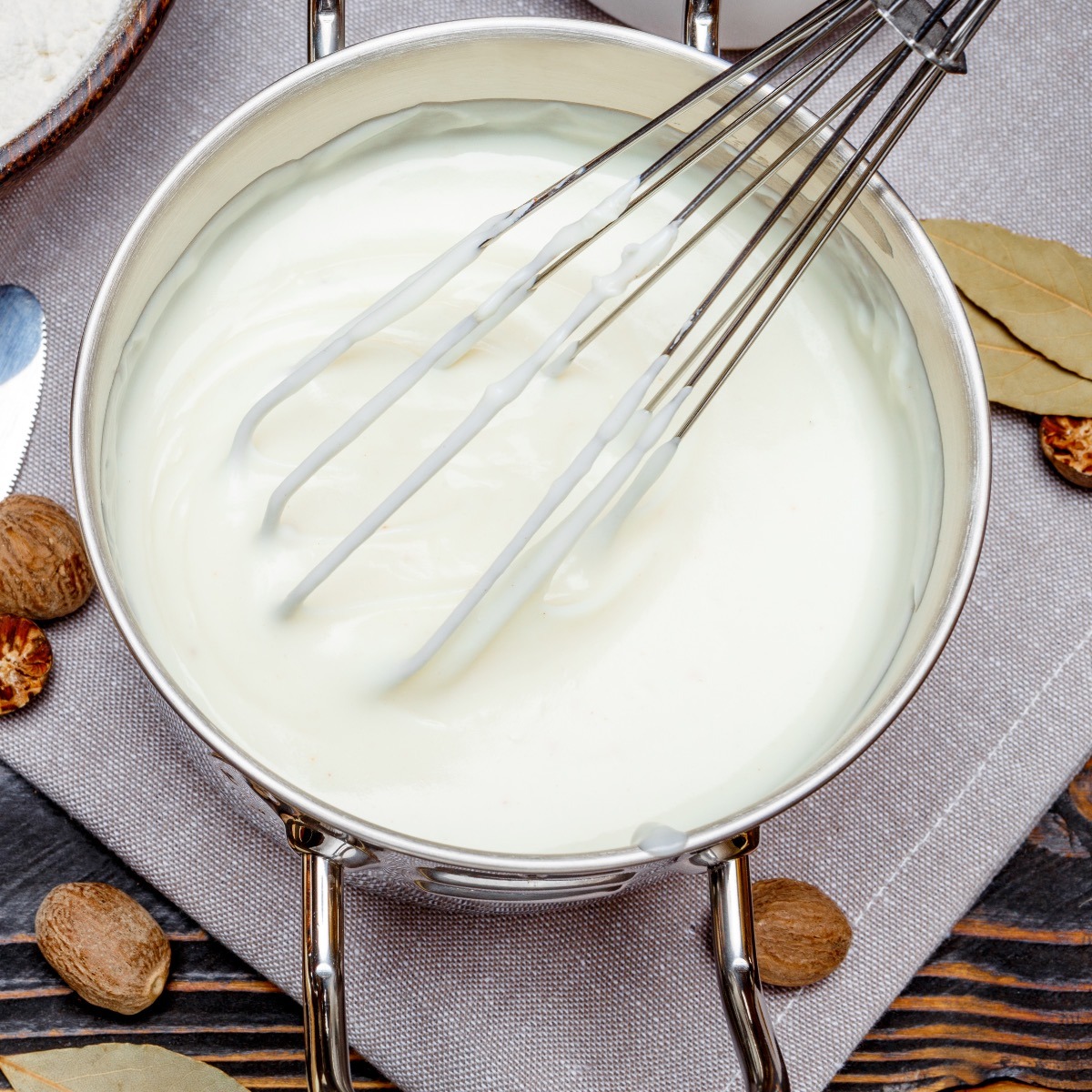
White Chicken Stock in Sauces & Dishes
White chicken stock serves as a foundational ingredient in many classic sauces, particularly in French cuisine, where it adds a subtle, balanced flavor that complements other components without overwhelming them. Here are a few notable sauces that use white chicken stock:
| Dish/Sauce | Description | Why White Chicken Stock is Used |
|---|---|---|
| Velouté Sauce | One of the five French mother sauces, thickened with a roux | White stock provides a neutral, light base that lets other flavors shine |
| Bechamel Sauce | Classic white sauce made with milk and roux | (Typically doesn’t use stock) – but can be blended with white stock for added flavor without darkening |
| Chasseur Sauce | "Hunter's sauce" with mushrooms, shallots, white wine, and tomatoes | Often starts with velouté or demi-glace—white stock keeps the base light and blends well with wine and herbs |
| Chicken Noodle Soup | Classic comfort soup with noodles, chicken, and vegetables | Gives a clean, savory broth without overpowering the delicate ingredients |
| Risotto (e.g., Chicken or Herb) | Creamy rice dish that slowly absorbs hot stock while cooking | White stock adds subtle depth without overshadowing the rice or herbs |
| Poached Chicken | Chicken cooked gently in simmering liquid | White stock infuses flavor while keeping the dish light and tender |
| Cream of Mushroom Soup | Silky soup made with mushrooms, cream, and often a hint of wine | Adds savory backbone without darkening the soup |
| Chicken Pot Pie | Comforting dish with creamy chicken and vegetable filling under crust | White stock helps form a light gravy that doesn't turn brown |
| Frisée Salad with Warm Chicken Vinaigrette | French-style salad often dressed with a light chicken-based vinaigrette | White stock brings mild umami to warm dressings without heaviness |
| Pan-Simmered Vegetables | Lightly cooked vegetables finished with herbs | White stock adds body and flavor while staying bright and clean |
| Matzo Ball Soup | Traditional Jewish soup with matzo dumplings | White stock keeps the soup clear, with a comforting chicken essence |
| Cream Sauces for Pasta or Chicken | Rich sauces with butter, cream, and stock | White stock prevents the sauce from becoming too dark or heavy |
What is a Sachet?
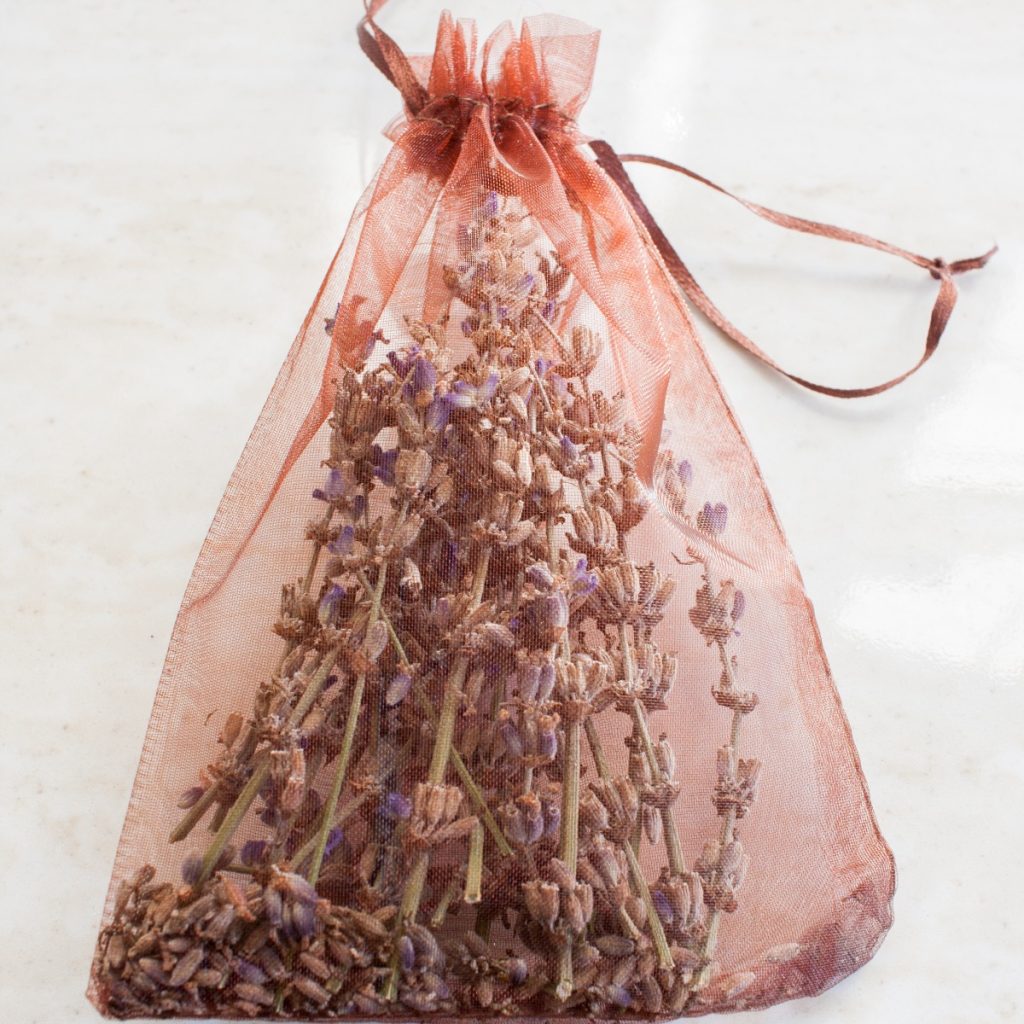
A sachet is a small bag made of cloth or cheesecloth filled with various herbs and spices, used to add flavor to soups, stews, stocks, and sauces. The combination of herbs and spices can vary depending on the type of cooking, but typically includes bay leaves, peppercorns, parsley, and thyme.
Fresh herbs and spices are preferable, but dried ones will suffice if you need to use them instead. You can use kitchen string (I have a roll of kite string in our kitchen) to tie the bundle together or even tie the four corners to themselves.
I have even seen these nifty disposable cloth bags you can buy at kitchen supply stores.
